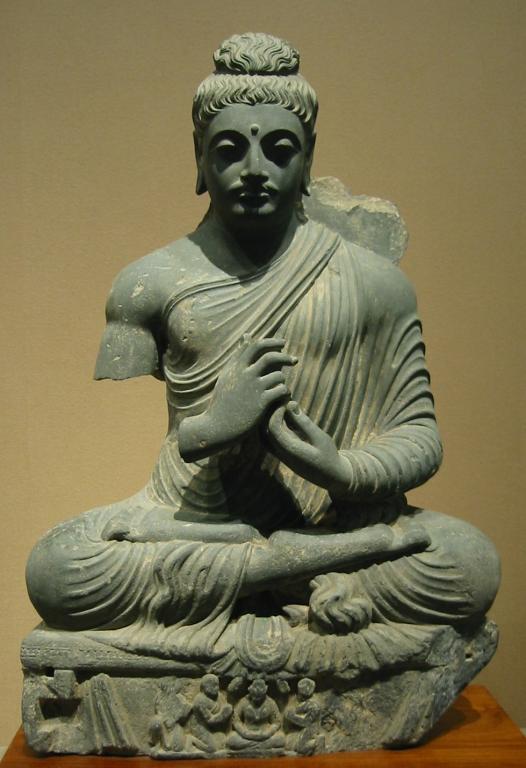
(Wikimedia Commons public domain image)
In my teens, I did a bit of reading on Buddhism (e.g., some Alan Watts, a dab of D. T. Suzuki, and, of course, Herman Hesse’s Siddhartha, which was really in vogue among young aspiring intellectuals in late-1960s California) and I’ve done a little bit of reading on Buddhism since then, as well. But I’m by no means an expert on Buddhism, and I don’t claim to be.
So I’m going to sketch out a line of thinking here and invite anybody who does know anything about Buddhism to weigh in, to tell me whether I’m completely off base or not:
My impression is that, in a certain sense, Buddhism and Christianity (certainly the LDS understanding of Christianity) are polar opposites in their conception of the nature of human salvation.
Buddhism is focused on overcoming or escaping suffering. Buddhism’s “Four Noble Truths,” purportedly the heart of essence of the teaching of the Buddha, are
- The truth of suffering
- The truth of the cause of suffering
- The truth of the end of suffering
- The truth of the path that leads to the end of suffering.
How can we escape suffering? Through enlightenment (bodhi, or, in Japanese Buddhism, satori), which leads to “detachment” or “non-attachment.” That’s the point behind the familiar look of serenity on the face of the Buddha in statuary and in other representations of him.
My sense is that Christianity, by contrast, emphasizes a vast expansion of care and concern — and thus of “attachment.” We’re still promised deliverance from pain and sorrow and suffering. But that won’t come through non-attachment. And it won’t come through our own efforts. It will come from divine grace.
Permit me a metaphor: Each of us is surrounded by a soap bubble like those sometimes produced by children playing outdoors. The surface of that bubble represents our capacity to be hurt; within it are the people and things that we care about. The larger that surface is, the more vulnerable we are to pain. If we shrink to caring only about ourselves, we can still be hurt, but if we expand it to include loved ones — or possessions, or ambitions, or whatever — we increase our vulnerability.
Buddhism, I think, teaches that we should shrink that “bubble” to the point of disappearance, while Christianity, certainly the Latter-day Saint reading of Christianity, wants us to vastly increase our circle of caring. That’s one of the reasons that I consider the shortest of all biblical verses, John 11:35, among the Bible’s most significant passages, and why I’m so fond of Moses 7. (See my column “Reconsidering the emotions of God.”) God himself is not “unattached”; he loves the world (John 3:16) and his purposes are entirely other-centered (Moses 1:39).
Now, please don’t imagine that I’m saying that Buddhists aren’t or cannot be kind and charitable. They certainly can be, and many are. (One of my heroes is the third-century BC Buddhist emperor of India, Ashoka.) But, ideally, they are to be kind and charitable with an attitude of serene non-attachment.
The classic illustration of this is the Buddha himself. But there are others like him who, although they have already achieved enlightenment in some previous life and, thus, could have stepped away from the cycle of birth, death, and rebirth, have returned to this world of pain and suffering as bodhisattvas. They do this out of selfless (and serene!) compassion, in order to help others achieve enlightenment.
In this regard, Buddhism’s view of the bodhisattvas is quite like the Christian view of the saving Son of God, as it is classically expressed in the traditional Credo, qui propter nos homines, et propter nostram salutem descendit de caelis (“who, for us humans and for our salvation, came down from heaven”). The Book of Mormon terms this “the condescension of God.”
Do I have this all wrong?










